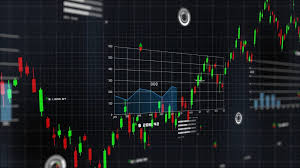
Understanding Crypto Trading Indicators for Better Investment Decisions
In the fast-paced world of cryptocurrency trading, making informed decisions is crucial to succeed. Traders often rely on various tools and metrics to analyze market conditions, identify potential price movements, and formulate strategies. Among these tools, crypto trading indicators play a pivotal role. This article will delve into the significance of these indicators, focus on the most commonly used types, and explore how they can enhance your trading performance. You can also check this link for additional insights: Crypto Trading Indicators https://cellexcel.org/press%20releases/2014/NanoViricides%20President%20Dr.%20Diwan%20to%20Present%20at%20the%20Wall%20Street%20Analyst%20Forum%20Today,%20June%2019th,%20in%20New%20York%20City.html
What Are Crypto Trading Indicators?
Crypto trading indicators are mathematical calculations based on the price, volume, or open interest of a cryptocurrency. They help traders evaluate market trends, volatility, and momentum, aiding in decision-making processes. Most of these indicators are graphical representations derived from historical data. Understanding how to use and interpret these indicators can provide valuable insights into future price movements.
Types of Crypto Trading Indicators
There are several types of indicators used in crypto trading, each serving a specific purpose and offering unique insights. The following sections will cover some of the most popular indicators and their significance.
1. Moving Averages (MA)
Moving averages are one of the most widely used indicators in trading. They smooth out price data to create a trend-following indicator. The two main types are the Simple Moving Average (SMA) and the Exponential Moving Average (EMA).
- Simple Moving Average (SMA): The SMA calculates the average price over a specified period, giving equal weight to all prices in that timeframe.
- Exponential Moving Average (EMA): The EMA gives more weight to recent prices, making it more responsive to new information and price changes.

Traders often use moving averages to identify trend direction and potential reversal points.
2. Relative Strength Index (RSI)
The RSI is a momentum oscillator that measures the speed and change of price movements. It ranges from 0 to 100 and is typically used to identify overbought or oversold conditions in a market.
– An RSI above 70 indicates that a cryptocurrency may be overbought and could be due for a price correction.
– An RSI below 30 suggests that the asset may be oversold and could experience a price rally.
3. Moving Average Convergence Divergence (MACD)
The MACD is a trend-following momentum indicator that shows the relationship between two moving averages of a security’s price. The MACD consists of three components:
- The MACD line (the difference between the 12-day EMA and the 26-day EMA).
- The Signal line (the 9-day EMA of the MACD line).
- The Histogram (a graphical representation of the difference between the MACD line and the Signal line).
Traders use MACD for generating buy and sell signals based on the crossovers of these lines.
4. Bollinger Bands
Bollinger Bands consist of a middle band (SMA) and two outer bands (standard deviations from the SMA). The bands expand and contract based on market volatility.
– If the price breaks above the upper band, it might indicate an overbought market, while a drop below the lower band could suggest an oversold condition.
– The width of the bands can also indicate periods of high or low volatility.

5. Volume Indicators
Volume indicators help traders understand the strength behind price movements and can indicate potential trend reversals. High trading volume during an upward trend suggests strong buying interest, while low volume during an upward trend might signal weakness.
– Commonly used volume indicators include On-Balance Volume (OBV) and Chaikin Money Flow (CMF).
How to Use Crypto Trading Indicators Effectively
While trading indicators can provide useful insights, relying solely on them without proper analysis can lead to poor trading decisions. Here are some tips for using indicators effectively:
- Use Multiple Indicators: Relying on one indicator can lead to false signals. Use a combination of indicators to confirm trends and signals.
- Understand Market Context: Analyze the broader market conditions. Indicators can behave differently in trending markets compared to ranging markets.
- Set Clear Entry and Exit Points: Use indicators to define your trading strategy, including where to enter and exit trades based on signals from your indicators.
- Backtest and Practice: Before trading with real money, backtest your strategies using historical price data to gauge their effectiveness.
The Importance of Combining Fundamental Analysis
While trading indicators focus on price movements, combining them with fundamental analysis can provide a more comprehensive view of the markets. Understanding the underlying factors driving the value of cryptocurrencies—such as technological advancements, regulatory changes, and market demand—can enhance your ability to make informed trading decisions.
Conclusion
Crypto trading indicators are powerful tools that can aid traders in making more informed investment decisions. By understanding and effectively using various indicators, traders can enhance their ability to identify trends, potential reversals, and market volatility. However, successful trading goes beyond just technical analysis; it also involves a solid understanding of the underlying fundamentals driving the market. As cryptocurrencies continue to evolve, staying informed and adapting to market changes will be essential for traders looking to maximize their returns.

